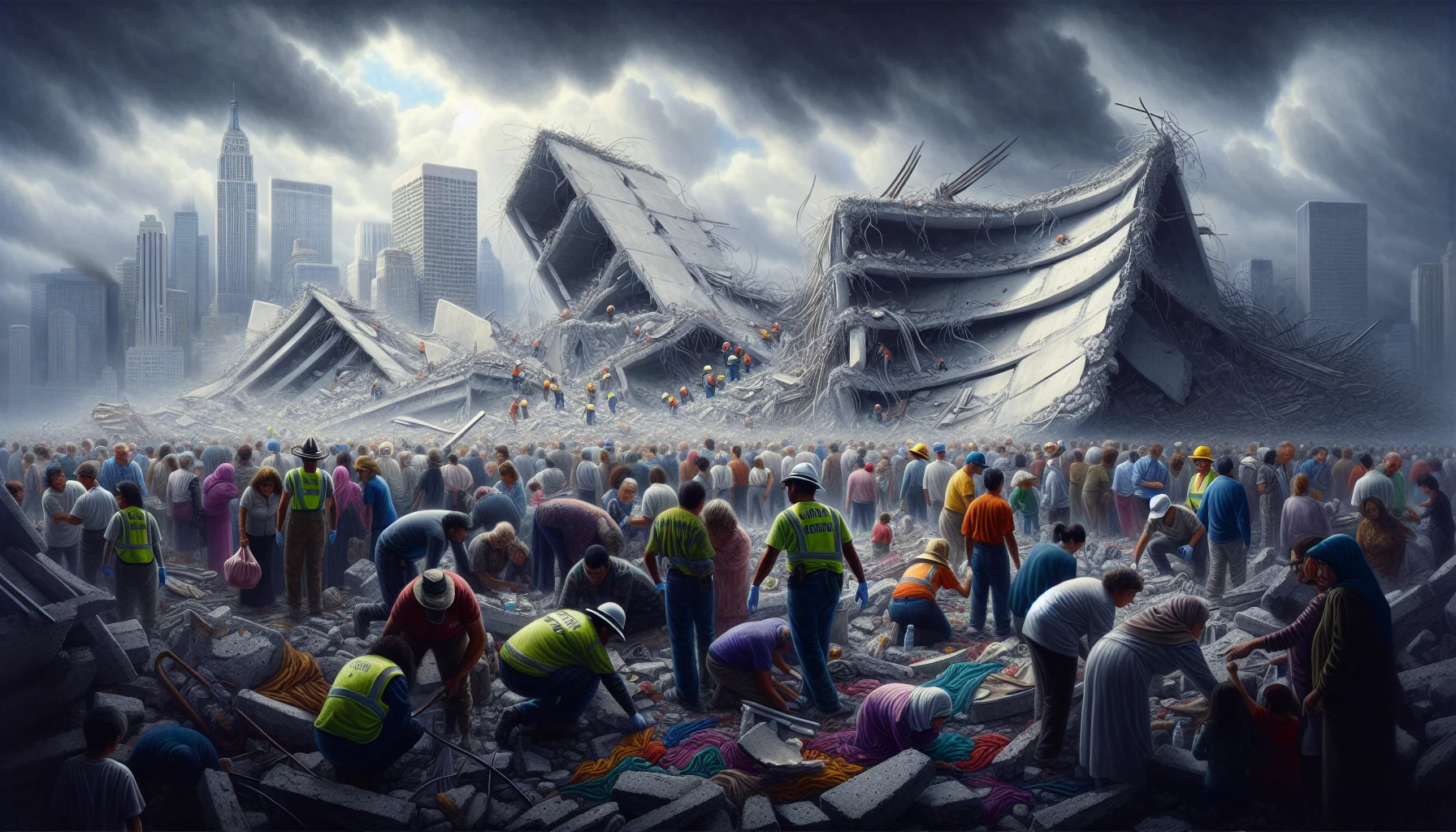
Rana Plaza Collapse
by: The Calamity Calendar Team
April 24, 2013
A Day That Changed Lives
April 24, 2013, began as any routine day for the thousands of garment workers at Rana Plaza—a day destined to alter the course of their lives and prompt a global reckoning on safety standards in the fashion industry. Located in Savar Upazila, near Bangladesh’s capital Dhaka, Rana Plaza stood as a testament to Bangladesh’s booming garment industry, which then ranked as the second-largest clothing exporter in the world.
Cracks in the Foundation
The prelude to the tragedy began the day before, on April 23, 2013. Reports started trickling in about alarming cracks spotted in the towering, eight-story building that housed several garment factories, alongside a bank, commercial shops, and residential apartments. The news was grave enough to prompt the Bangladesh Industrial Police to recommend an immediate evacuation of all facilities.
While the bank heeded the advice and vacated, other parts of the building remained bustling with activity the next morning. The building’s owner, Sohel Rana, seemed dismissive of the warnings, and factory workers were allegedly coerced back to their sewing machines with threats of withheld pay—a stark reminder of the tense balance between safety and survival in one of the world's most cost-sensitive industries.
The Collapse
As the morning rush set in on April 24, life inside Rana Plaza seemed to slog along as usual. That illusion shattered at 8:57 AM local time. Within seconds, the building, which had been teeming with human activity, folded in on itself like a house of cards, trapping thousands below its rubble. The sheer horror of the situation was palpable, and soon, chaos reigned where a thriving business complex had once stood.
Witnesses described scenes of desperation and determination as local volunteers, emergency services, and even passerby raced against time, clambering over twisted steel and debris to pull survivors from the wreckage. The images of that morning—a blend of dust, cries for help, and the grim determination of rescuers—etched themselves into the global consciousness.
Heroes Amidst the Rubble
For days, rescuers worked tirelessly, battling exhaustion and heat in a painstaking search for life amidst the destruction. The endeavor was fraught with emotional highs and lows as each new survivor was greeted with relief and each recovery of a lifeless victim reinforced the magnitude of the disaster.
Thanks for subscribing!
By May 13, 2013, as the official end of rescue operations was declared, the toll lay heavy on a shocked nation. The final count—1,134 lives lost and over 2,500 injured—cemented the Rana Plaza collapse as one of the most devastating industrial disasters in history.
International Outcry and Reform
The catastrophic event at Rana Plaza did not just stir local response; it rippled across the globe, demanding accountability and action from multinational brands and the world's consumers. Companies like Primark, Mango, and Walmart, whose garments had been sewn within Rana Plaza’s walls, faced intense scrutiny over their factory audit practices and labor conditions in overseas supply chains.
In the wake of public outcry, two significant safety pacts emerged: the Accord on Fire and Building Safety and the Alliance for Bangladesh Worker Safety. These initiatives aimed to overhaul Bangladesh's garment sector with safety inspections and renovation efforts across the industry. Promises of improved conditions and increased corporate responsibility presented a path towards preventing such tragedies in the future.
Seeking Justice
Alongside structural reforms, legal actions followed in the wake of the collapse, targeting Sohel Rana and others deemed accountable for the disaster. Rana, apprehended while attempting to flee across the Indian border, faced a litany of charges, from corruption to homicide, as the justice system sought to redress the negligence that had cost so many their lives.
Lessons Rattling Forward
A decade on, the legacy of the Rana Plaza collapse continues to impact working conditions within Bangladesh’s garment industry. While some progress has been made regarding building safety and worker rights, enforcement of regulations remains inconsistent, reflecting a broader global challenge in ensuring long-term compliance and ethical practices.
The tragedy of Rana Plaza serves as a poignant reminder of the human lives behind the clothes we wear—a rallying cry for ongoing vigilance and responsibility in a world interconnected by commerce and conscience.
Stay in the Loop!
Become a Calamity Insider and get exclusive Calamity Calendar updates delivered straight to your inbox.
Thanks! You're now subscribed.